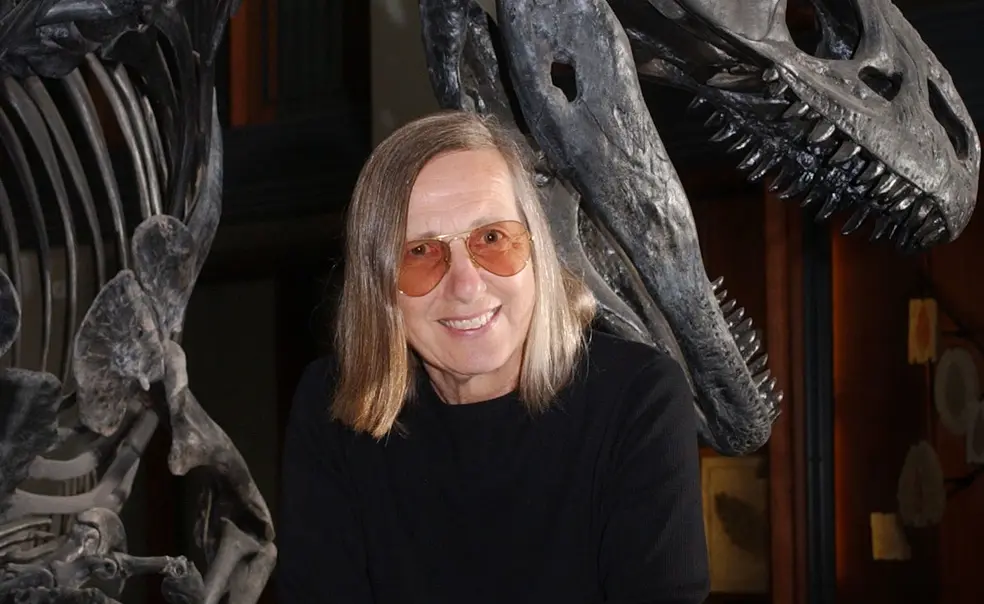Professor Emerita Gerta Keller Challenges Dinosaur Extinction Theory
The book: What made the dinosaurs go extinct? The prevailing theory involves an asteroid that struck Earth. But what if that wasn’t the cause? In The Last Extinction (Diversion Books), Princeton geologist Gerta Keller says her research showed that multiple volcanic eruptions in India triggered a climate catastrophe that led to the dinosaurs’ demise. The book opens with Keller presenting her findings at a conference, where she’s met with ridicule and outrage at even the idea of challenging the believed narrative. The Last Extinction covers the bitter feud she’s dubbed the “Dinosaur Wars,” and Keller’s refusal to back down.

The author: Gerta Keller is a professor emerita of geosciences at Princeton. She is the coauthor of five books including Cretaceous-Tertiary Mass Extinction, Chicxulub and the KTB Mass Extinction in Texas, and Micropaleontology and Stratigraphy: Global Bioevents in Earth’s History. A leading authority on catastrophes, mass extinctions, and the impacts of volcanos, she has also published more than 260 articles in scientific publications and journals.
Excerpt:
The Nastiest Feud In Science
Introduced as “the well-known sedimentologist George Keller,” I walked onto the stage to snickering laughter. At the podium I adjusted the microphone, took a deep breath, and said, “I am Gerta Keller, the paleontologist.” More laughter came from the sea of grinning male faces before me. The auditorium was packed to overflow, with people standing in the back and along the walls. These were the heavy hitters of my field — the world’s leading geochemists, geophysicists, paleontologists, and other scientists — gathered at the prestigious 1988 Snowbird II conference on Impacts and Mass Extinctions. I quieted the voice in my mind that told me I didn’t belong here; my work would speak for itself.
The title of my presentation flashed across the screen behind me: Chicxulub — the Non-Smoking Gun: Impact Crater Predates K–P Boundary, and the laughter turned to murmurs of consternation and scorn. I began my talk, methodically walking the audience through the data I’d carefully assembled over the past three years. My nervousness turned into excitement as I made my case. I’d waited a long time for this moment. I knew my findings had the potential to redirect the entire conversation around one of the great mysteries in my field — what caused mass extinctions.
Only minutes after I’d begun my presentation, a tall, imposing man rose from the audience and strode to the microphone positioned in the aisle in the middle of the auditorium. I knew him: Jan Smit. Smit was assistant professor of paleontology and geology from the University of Utrecht and a fervent disciple of the impact mass extinction theory in its most dramatic version: A giant meteorite ten kilometers in diameter crashed into Earth, triggering freezing darkness, global wildfires, earthquakes, and mega-tsunami waves that devastated life on land and sea. Smit stared me down, a smug smile playing at his lips. The energy in the room changed, charged with nervous anticipation. The crowd registered it before I did: A fight was brewing.
As I continued my talk, doing my best to ignore Smit, other scientists lined up behind him and the two other microphones positioned in the side aisles. One by one they rose until dozens of men, tense and visibly angry, stood in silence. The microphones were to be used for follow-up questions, discussion, and critique, but as I watched the men heave with outrage, one almost purple in the face, it became clear that they were to be the weapons of my public humiliation.
I was only halfway through my presentation when Smit interrupted in a booming voice, “You are simply wrong! Everyone knows the mass extinction was instantaneous and caused by the impact.”
A chorus of shouts rose in support.
You know nothing!
Garbage!
You’re ignorant!
A sick despair swept through me. I paused to collect myself and took a drink of water. My hand shook as I raised the glass. I pressed on, pointing out the data that defended my claims, but was quickly shouted down again.
You don’t know what you’re doing!
Stupid!
For the next 45 minutes, a litany of insults rained down on me as some of the world’s most renowned geophysicists, planetologists, and astrophysicists took turns publicly insulting me. Repeatedly, they asked me, Why does your data not confirm Jan Smit’s mass extinction theory? There was no interest in the science, no questions about my results — just insults, denials, threats, and rage against an upstart, a woman no less, who dared to question their theory. Relishing his turn at the microphone, Smit shouted the loudest, attacking my data fiercely, though without substance. I could see his goal was to intimidate and isolate me, and ultimately to shut me down.
My cheeks burned and my heart threatened to gallop outside of my chest. I was confident in my results and knew I could ably defend them if given the opportunity, but I couldn’t get a word in above the constant shouting. Never did I imagine this type of bullying behavior could occur at a professional conference.
Weren’t scientists supposed to be objective in their pursuit of the truth? If so, why did these men so passionately deny my research before they had even heard it? Why were they attempting to silence me? If they weren’t interested in contending with the evidence I was presenting, what did they want? I would wrestle with these questions for years to come. All I knew in the moment, shaking onstage, was that I was telling the truth according to the facts. If my research was right, then an asteroid did not wipe out the dinosaurs.
My attempt to share my research at the Snowbird II conference was the beginning of what has become popularly known as “The Dinosaur Wars,” a contentious debate over what triggered the fifth mass extinction at the end of the Cretaceous Era sixty-six million years ago: in other words, what really killed the dinosaurs. Our real-world monsters, dinosaurs have enthralled us for generations, and the question of what caused their demise is more relevant than ever as humankind confronts the paroxysms of an imperiled planet and the possibility that we may
become the dinosaurs of the sixth extinction. It’s been called the nastiest feud in science. Passions in this field run deep. Most people don’t think of science as a blood sport; this book may change that. The Last Extinction is the story of the forty-three years I’ve spent in the arena, fighting — and winning — against a toxic scientific establishment determined to bury me, all for my stubborn pursuit of the truth. Because I dared to challenge the popular asteroid impact theory, Smit’s contingent launched an all-out war against me, doing their utmost to sabotage my work, destroy my reputation, and suppress the publications of my research. I’ve been told a lesser individual might have cut and run, but quitting was never an option for me. Smit picked a fight with the wrong woman. To succeed, I’ve had to harness all my courage and resilience, forged over a lifetime of unconventional experiences. I’ve had to be a fighter, and I hope to show other women how they, too, can fight for their careers in science.
This is the story of how I and a small team of collaborators were finally able to share our exhilarating discoveries in the face of a unified group of establishment scientists who were unwilling to listen to reason. In it you will find betrayal and sabotage, as well as perseverance, vindication, and the power of truth, and woven through it all, the dinosaurs, impact, and volcanism. It is, from where I sit, the greatest scientific detective story of our time.
Excerpted from The Last Extinction: The Real Science Behind the Death of the Dinosaurs by Dr. Gerta Keller, available now wherever books are sold. Copyright © 2025 Dr. Gerta Keller. Printed with permission of the publisher, Diversion Books. All rights reserved.
Reviews:
“Gerta Keller … is rattling the foundations. And the theory she supports … has unleashed a small tempest of its own among die-hard believers in the meteor theory, who are known as ‘impacters.’ … Keller argues that, besides a series of meteor impacts, the extinction of the dinosaurs was preceded by an intense period of volcanic eruptions that altered the climate. … All this makes her a maverick.” — The New York Times
“Scathing and illuminating. … [M]uch of the scientific community and the popular press accepted the idea that a meteor colliding with the Earth was responsible for the planet’s fifth mass extinction. Keller, however, had her doubts, and worked tirelessly to gather data. … Her results are shocking.” – Publishers Weekly












No responses yet